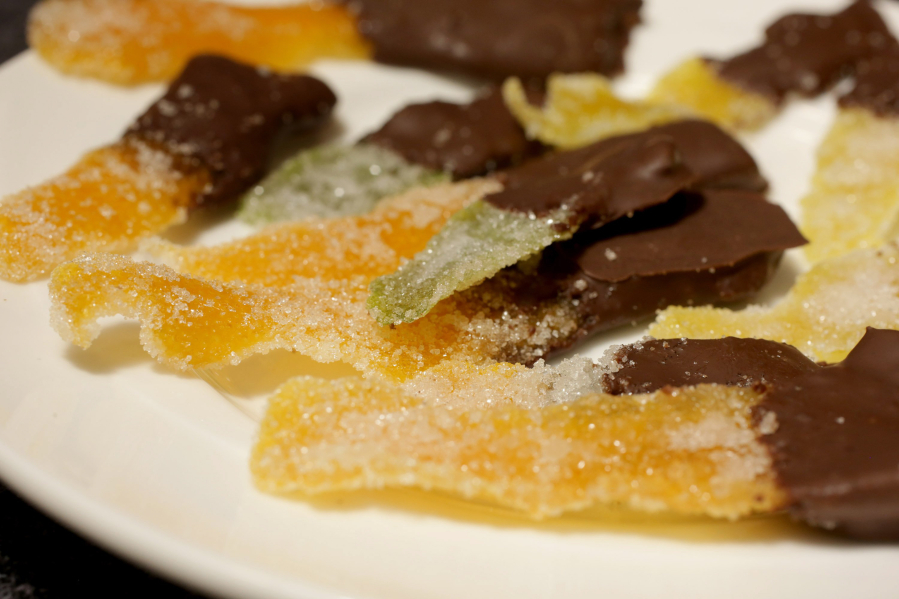Remove fruit peels with a fork and immediately place in the plate of sugar. Flip the peels over so both sides are covered with sugar. Press the peels down into the sugar so they are thoroughly saturated with it. Let sit 30 minutes. Discard the remaining sugar, but reserve the fruit-flavored syrup for cocktails, if you like.
Place a heatproof bowl over a pan of simmering water; do not let the bottom of the bowl touch the water. Add the chocolate and stir until melted. Remove from the heat. Working in batches, submerge a few pieces of the peel into the chocolate, remove with a fork and place on the prepared baking sheet to set.
Store in an airtight container in the refrigerator for 1 week.
Per serving: 321 calories; 10 g fat; 6 g saturated fat; 2 mg cholesterol; 2 g protein; 55 g carbohydrate; 48 g sugar; 4 g fiber; 4 mg sodium; 37 mg calcium
Recipe by Jacques Pepin
MALTED CRISP TART
Yield: 8 to 12 servings
• For the brown sugar crust
1 ½ cups all-purpose flour
¼ teaspoon salt
1 tablespoon malted milk powder, such as plain (not chocolate) Ovaltine or Carnation
10 tablespoons (1 ¼ sticks) butter, cut into cubes and chilled
½ cup firmly packed light brown sugar
½ teaspoon vanilla extract
• For the caramelized crispies
½ cup granulated sugar
2 cups crisped rice cereal, such as Rice Krispies
For the milk chocolate ganache
8 ounces good-quality milk chocolate, coarsely chopped
2/3 cup heavy cream
2 teaspoons malted milk powder
• For the malted diplomat cream
1 ¼ cups whole milk
1/3 cup granulated sugar
1 large egg yolk
1 large egg
1 tablespoon plus 1 ½ teaspoons cornstarch
2 tablespoons malted milk powder
2 tablespoons butter
2 teaspoons vanilla extract
5 ounces (½ cup plus 2 tablespoons) heavy cream
• For the tart assembly
1 cup crushed malted milk balls
Malted milk balls, to garnish
Caramelized crispies, to garnish
Note: The tart dough (unbaked) and the caramelized crispies can be made the day before you make the rest.



